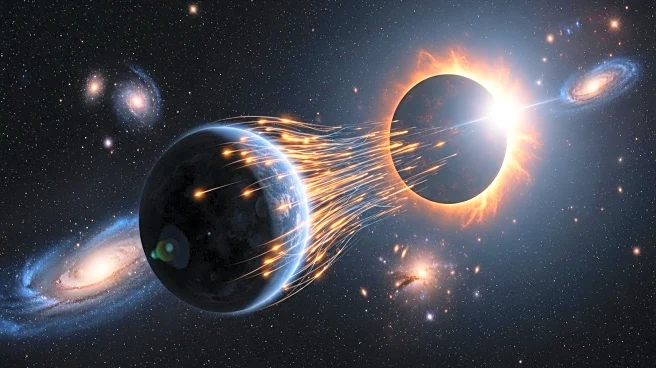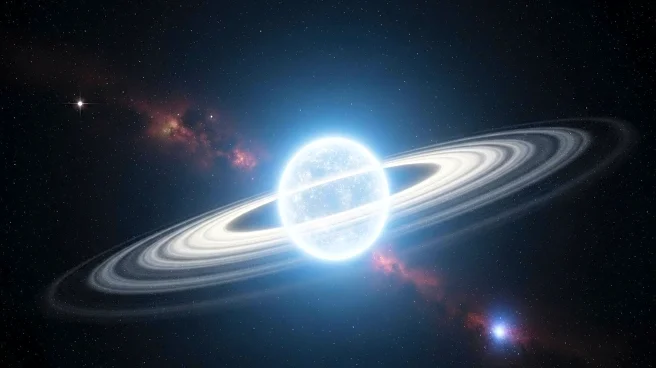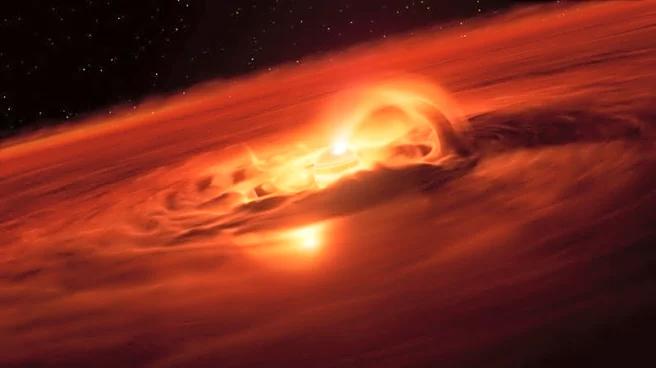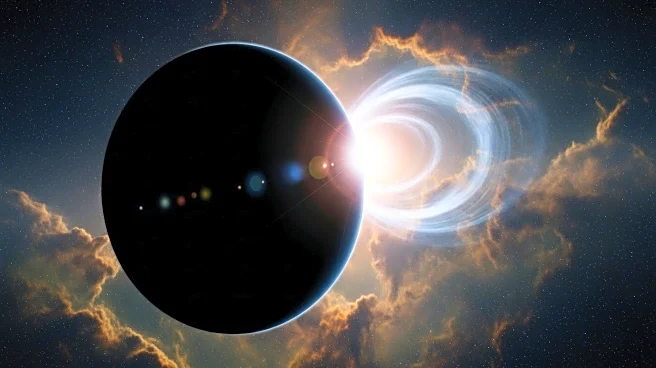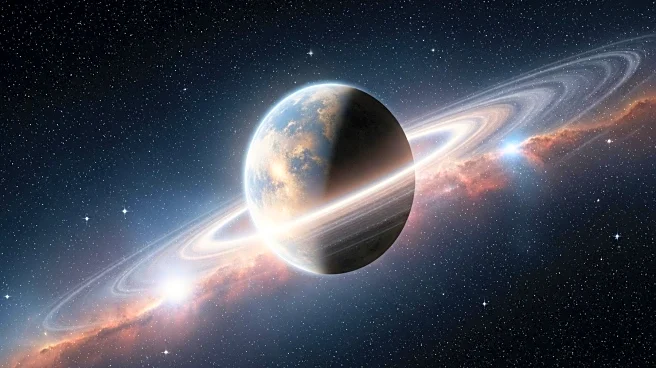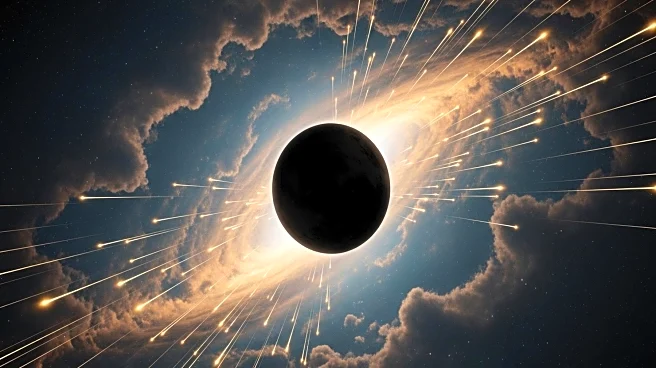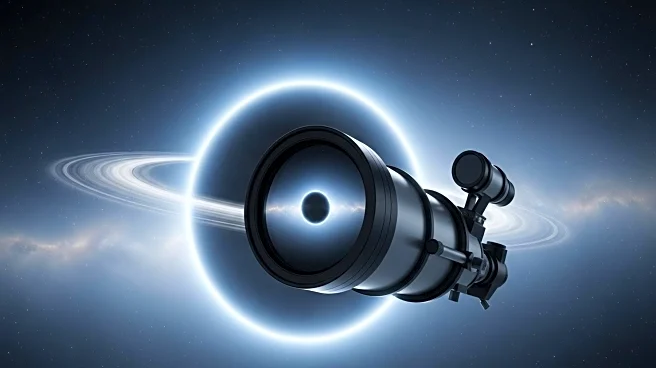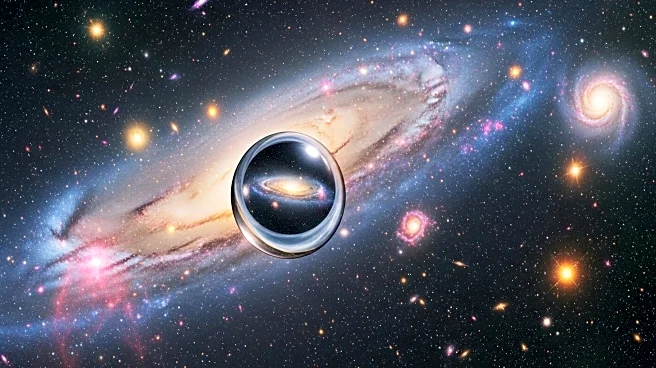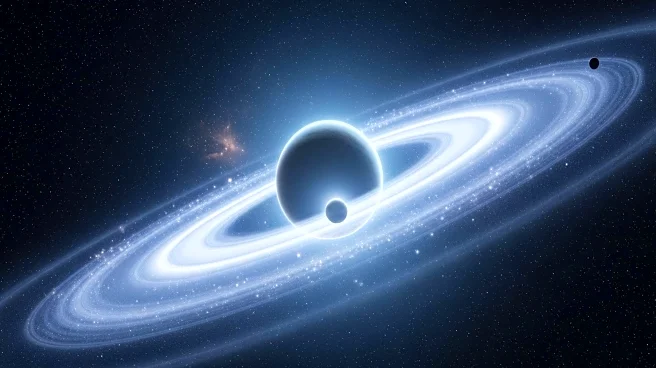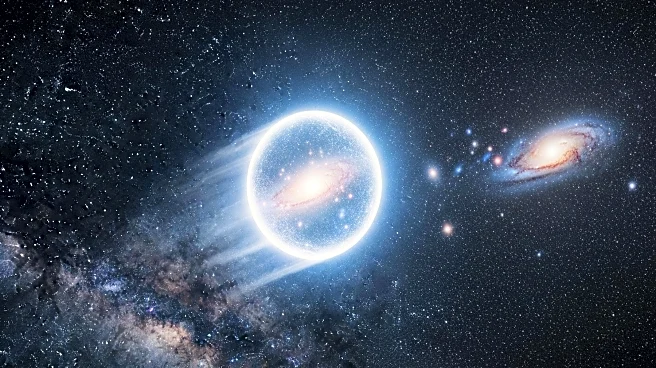What's Happening?
Astronomers have discovered a rogue planet, Cha 1107-7626, consuming material at an unprecedented rate of six billion tonnes per second. This planet, located approximately 620 light-years away in the constellation Chamaeleon, is not tethered to a star and is undergoing rapid growth through a process known as accretion. The European Southern Observatory's Very Large Telescope has observed this phenomenon, which challenges existing theories about planetary formation. The planet's mass is estimated to be between five and ten times that of Jupiter, and it is surrounded by a disc of gas and dust. The accretion process is occurring in dramatic bursts, offering new insights into the mechanisms behind rogue planetary formation.
Why It's Important?
The discovery of Cha 1107-7626's rapid growth blurs the lines between stars and planets, suggesting that rogue planets may form through processes similar to those of stars. This challenges traditional distinctions between celestial categories and raises questions about the fundamental differences between stars and planets. The presence of strong magnetic fields funneling material toward the planet, a phenomenon previously observed only in stars, supports this notion. Understanding the formation and evolution of rogue planets could provide valuable insights into the diversity of planetary systems and the processes that govern their formation, potentially reshaping our understanding of the cosmos.
What's Next?
Future research on rogue planets like Cha 1107-7626 is set to advance with the European Southern Observatory's upcoming Extremely Large Telescope (ELT). This new technology promises to enhance the ability to detect and analyze rogue planets, allowing astronomers to explore their characteristics in greater detail. The study of planetary objects displaying star-like behavior is expected to provide further insights into the early stages of rogue planets and the overlap with stellar processes. As technology progresses, the exploration of these cosmic wanderers may uncover new information about planetary and stellar evolution.
Beyond the Headlines
The discovery of rapid accretion in Cha 1107-7626 highlights the potential overlap between planetary and stellar formation processes. The chemical composition of the accretion disc changed during the burst, with water vapor appearing, a shift previously documented in stellar environments. This suggests that the mechanisms behind rogue planet formation may share similarities with those of stars, further blurring the distinctions between these celestial bodies. The study of rogue planets could lead to a deeper understanding of the complex interactions that govern the formation and evolution of celestial bodies.

